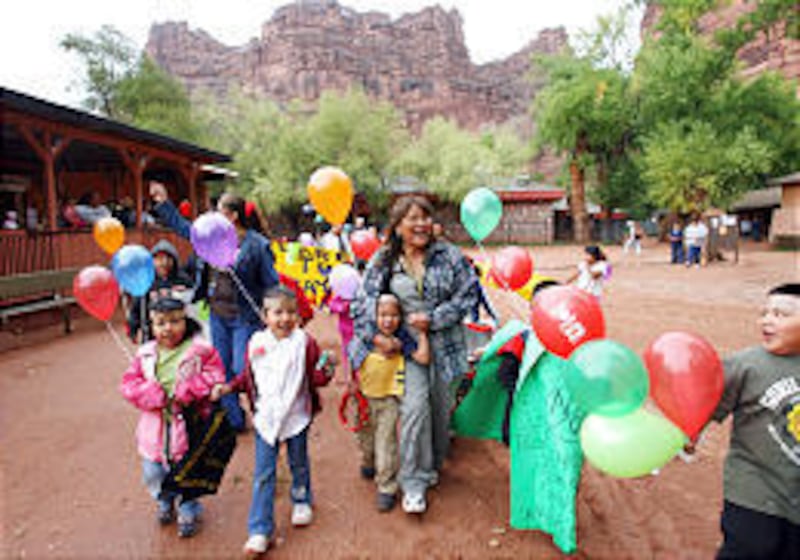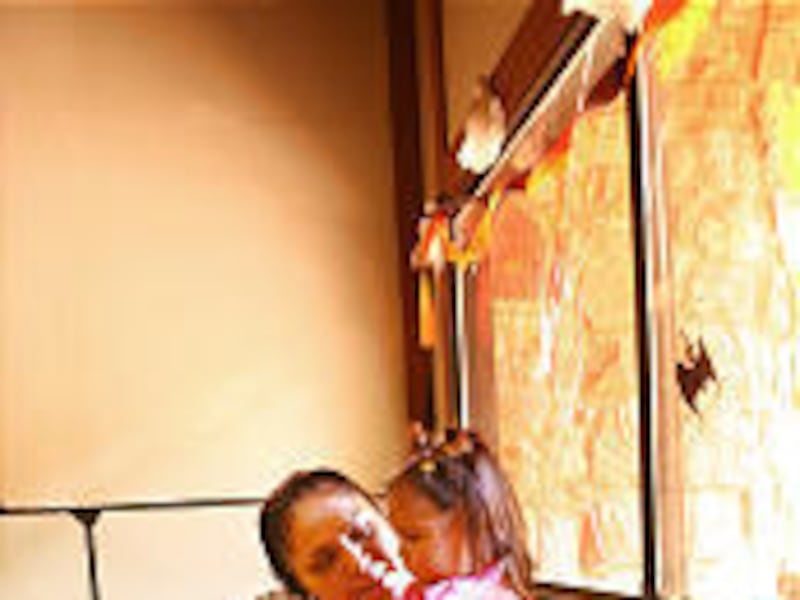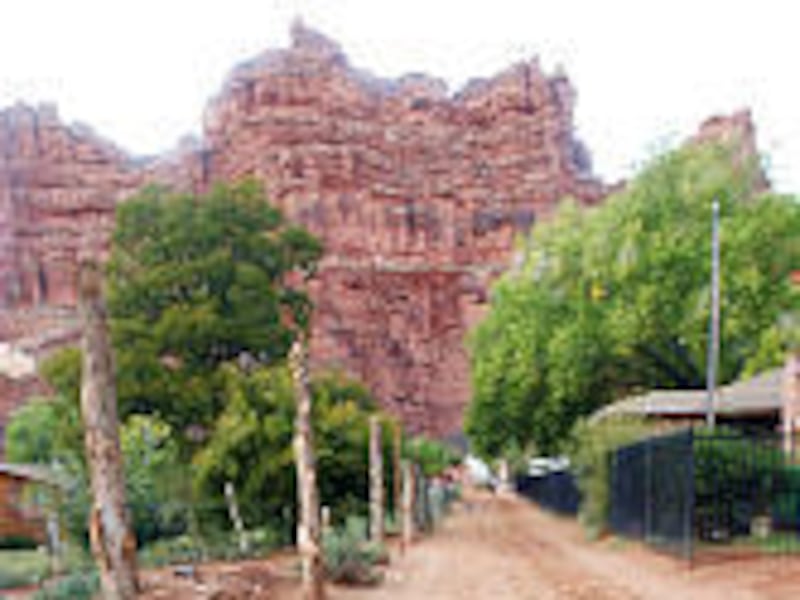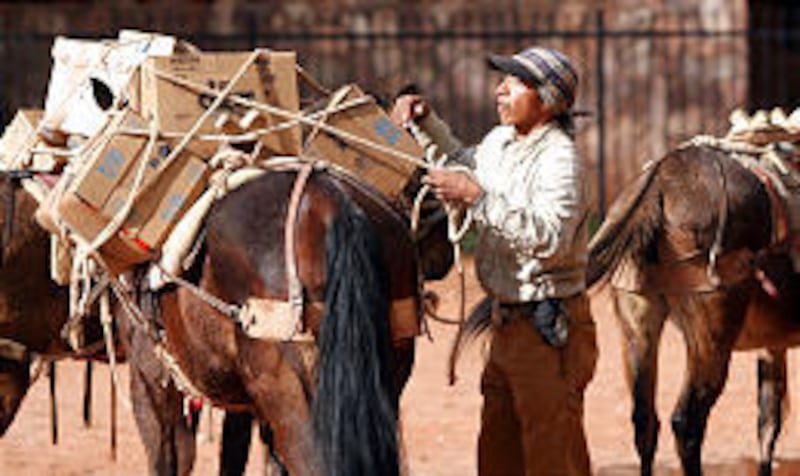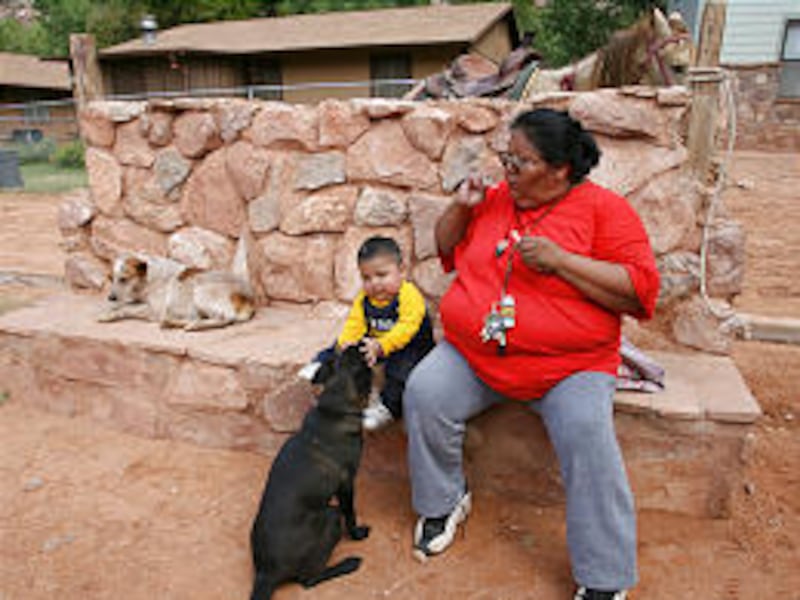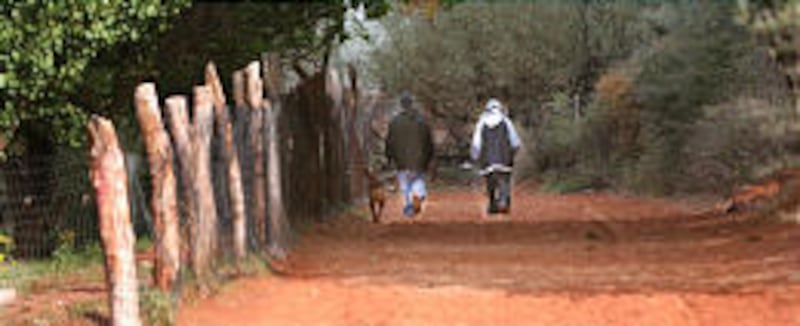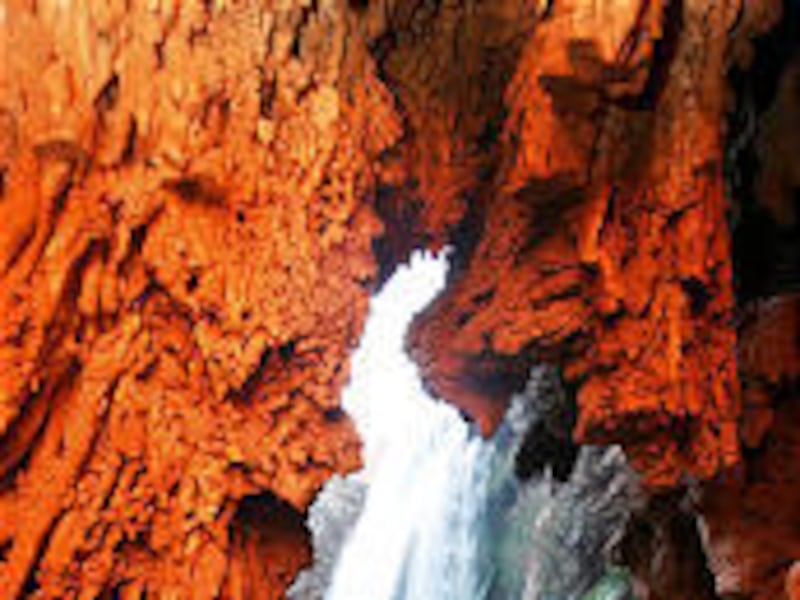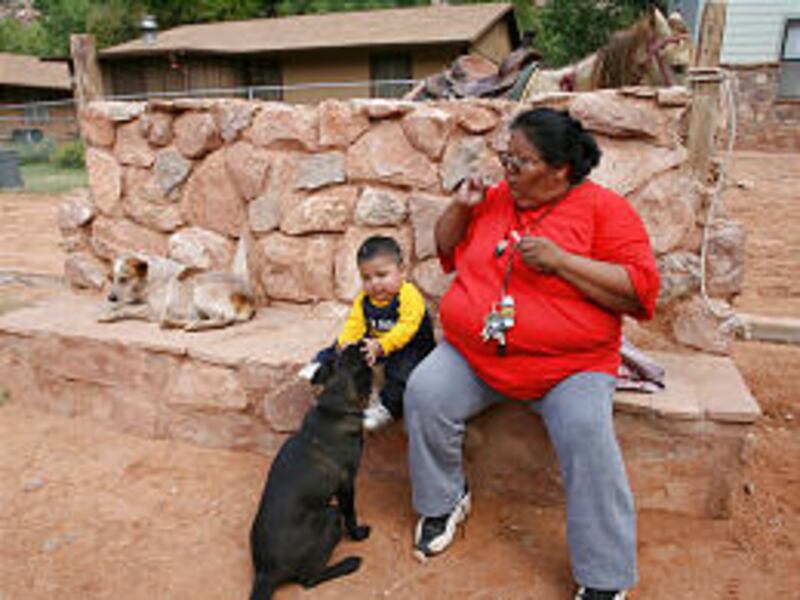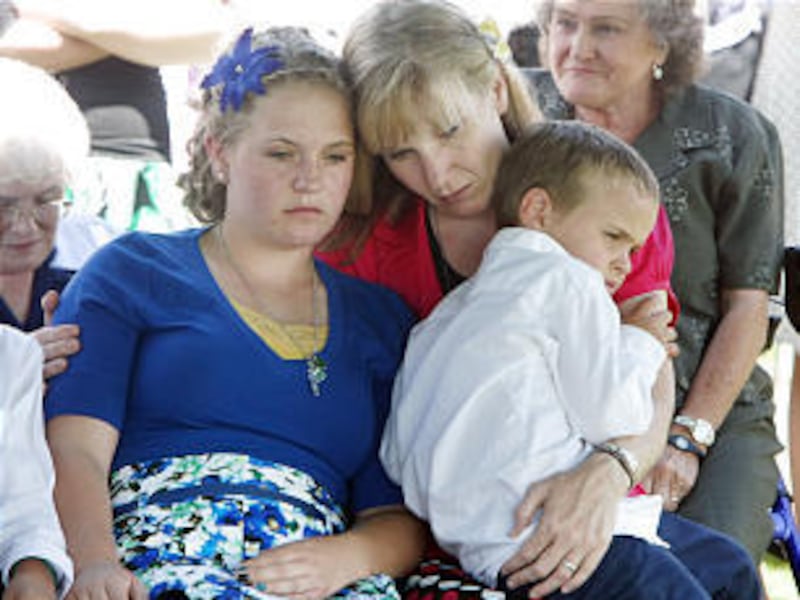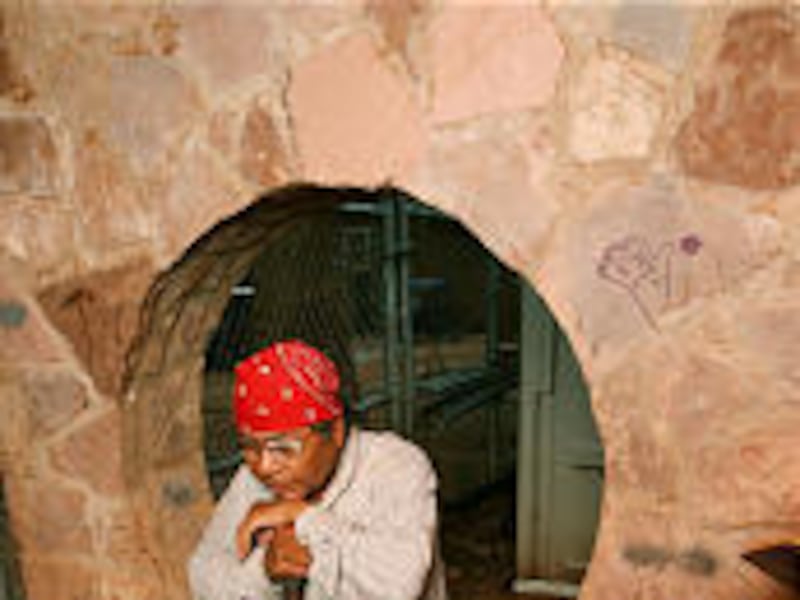SUPAI, Ariz. — Sally Balderrama left Supai with intentions of never returning to live.
Then she started a family.
Balderrama left the Havasupai Reservation in the Grand Canyon for Los Angeles. She lived outside with her three children for a little more than five years.
"It's all so fast moving," Balderrama said. "But it didn't really bother me."
It didn't bother her until she saw other family members getting mixed up in gangs and drugs. That's when she came home.
The same magical draw that brings outsiders to the blue-green waters brings residents back home seeking solace from the outside world.
"I came back to slow down," she said. "I wanted to raise my kids in a better place."
When asked about her favorite part of living on the reservation, Balderrama smiled big and watched people out the window as she thought about it. She has so many things she likes, it took her awhile to think about it.
Apart from the tranquility and the stars at night, she likes the assurance that everyone knows everyone.
Members of the tribe watch out for each other, especially the children, and are very close-knit. Balderrama has frequent visitors at the cafe where she works, especially family members.
Her sister stopped by with her two nieces. Imani Hyeoma, 2, eagerly crawled into Balderrama's arms and gave her a hug.
Balderrama helped to raise Imani from the time she was born, so there is a special bond between them.
"A lot of locals eat here," she said. "And the tourists always stop in."
She makes fry bread and tortillas and recommends that visitors try the Supai Taco or Supai Burrito when they pass through.
The Supai Taco consists of fry bread, ground hamburger, beans, lettuce, tomato and cheese. The burrito is the same, minus the fry bread and wrapped in a tortilla.
The Havasuw 'Baaja
The people of the Havasuw 'Baaja Tribe are known as people of the blue-green waters. Their tribe has always inhabited the Grand Canyon.
In 1919, when Grand Canyon National Park was created, the tribe was restricted to 518 acres. Since then, through a series of petitions to the federal government, the tribe has added 251,000 acres to the reservation.
The tribe numbers about 630 people, according to the Inter Tribal Council of Arizona. It is governed by seven elected tribal council members who serve two-year terms.
During the 1970s federal funds were given to the tribe to develop housing projects, creating jobs.
Bonnie Wescogani remembers how pre-fabricated homes replaced the old rock homes that once existed. Visitors can still see the skeletons of those rock buildings.
Wescogani liked it growing up here. There was no electricity, no running water and everyone seemed closer.
"Everything was cooked over a fire," she said. "And you had to go down to the river to get water."
It is that closeness and the smell of fires she misses.
Even still, she said the reservation is a great place to raise kids.
Havasupai School
In 1964, the Havasupai School opened offering grades one and two. Before then, children were sent to Indian boarding schools by order of the federal government.
The Havasupai School now supports grades K-8 and there is also a Head Start program on the reservation. Beyond eighth grade, children have to leave the reservation and attend either boarding schools or stay with friends and family and attend public schools.
One of the biggest struggles for people on the reservation is they want their children to learn Supai, an unwritten language. In the school, however, children are taught in English.
Many fear the younger generations will lose their native language to English.
"We're Supais and we talk Supai to our kids," said Carol Rogers, a housekeeper at Supai's Indian Health Service clinic. "We don't really want them to learn English, but they have to learn it in school."
Rogers' son, Dalbert Rogers Jr., 12, speaks most comfortably to his mom in Supai. Rarely does he speak in English.
Dalbert Jr. does not, however, shy away from learning English. He works with two missionaries from The Church of Jesus Christ of Latter-day Saints six days a week to better his reading comprehension.
One of the biggest struggles for the school is discipline and the seclusion of the area.
Dynah Nelson, of Orem, is teaching at the school for one year. She misses home and the snow that will fall this winter.
Both Nelson and Earlene Tahbo love working with the children but say they are a handful. In the past year, the school has lost three principals and several teachers, and more may be on their way out.
Reservation life
There are only two ways to get to the town of Supai: an 8-mile trail or helicopter. The only vehicles in the town are tractors or Kawasaki Mule utility vehicles.
Supplies and mail are brought in daily by pack animals Monday through Friday. They can be seen leaving the town early in the morning, making the three-hour ascent to Hilltop.
The Havasupai operate the only mail pack train in America. Each piece of mail sent from the reservation bears a special postmark to this effect.
Most residents leave and enter the canyon by helicopter. It's a five-minute ride from Hilltop to the landing field next to the cafe.
Tourism provides the main economic base for tribal members, with jobs in various tribal-run enterprises like the lodge, tourist office, cafe and grocery store.
Federal programs, such as housing projects and the clinic, provide most of the jobs. A resident doctor, supplied by the military, provides both outpatient and emergency services. If an emergency occurs, a helicopter from the Arizona Department of Public Safety can be dispatched to lift someone out of the canyon.
Church services are also available in the canyon. A non-denominational church hosts several meetings throughout the week.
In February, the LDS Church opened a branch in Supai, where a missionary couple is serving for a year.
Elder Frank and Sister Patricia Jasper are finding the climate quite different from their home town of Anchorage, Alaska. "We were shocked when we opened our call," Sister Jasper said.
They are the first LDS missionaries to be stationed in the canyon in more than 20 years.
Tiny Hanna was among the first baptized members of the church in the early 1970s. He was baptized in Havasu Creek. There are some 60 baptized members within the tribe.
While life is normally tranquil in the canyon, outside influences have taken their toll.
The Bureau of Indian Affairs provides two officers to the village. There is also a jail and a court.
The town of Supai has outlawed the possession of alcohol, drugs and firearms. However, these influences still make their way to the village of Supai.
Many residents say the problem does not stem from outsiders but the residents themselves — members who leave and later return to the reservation bringing in drugs and alcohol.
Just last May, Japanese tourist Tomomi Hanamure, 34, was stabbed 29 times and left near Navajo Falls. One person of interest, a Havasupai in his late teens, was taken into custody on another charge.
The Havasupai, like many tribes, are suspicious of outsiders and especially the media. They know, however, that they must reach out to tourists around the world to preserve their tourism economy, which is estimated to be in the neighborhood of $2.5 million a year.
Hanna, like many others, left for a time. The Bureau of Indian Affairs got him a job working as a stone mason in Park City.
He traveled throughout northern Utah and some of Idaho but came back after two years. Every now and again, he itches to see city lights and travels to Flagstaff.
But in the end, the same magical draw that brings outsiders to the blue-green waters, brings residents back home seeking solace from the outside world.
"Home is here for me," Hanna said. "It is a unique place. It is my everyday back yard."
E-mail: blee@desnews.com

